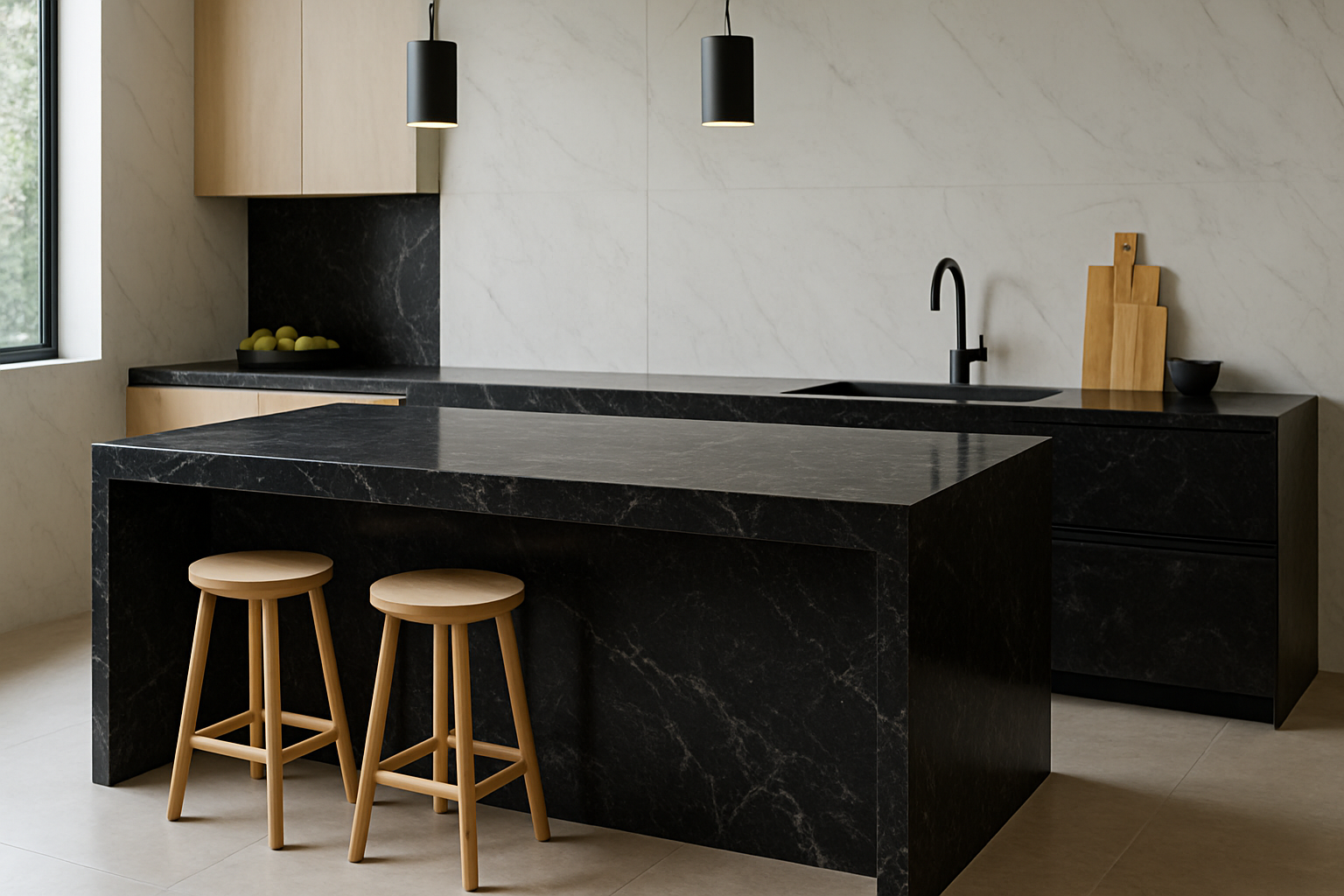Granite is a natural stone that forms deep inside the Earth. It’s made mostly of quartz and feldspar, which gives it a light color. You’ll also notice small dark spots on it — those come from other minerals like muscovite, giving granite a “salt and pepper” look.
Granite is known for being extremely hard and strong. Because of this, cutting it isn’t easy. It has to be cut with special tools, often using diamond blades, right at the quarry where it’s found. After cutting, the slabs are sent to different companies, where they’re polished and sold to customers.
Granite is a popular choice for things like kitchen countertops and flooring because it looks beautiful and lasts a long time.
Granite and Its Resistance To Extreme Heat
Granite is considered a type of igneous rock that emerges as the outcome of a process of high levels of heating and rapid cooling. Granite comes with a distinctive composition that makes it highly resistant to heat-related damage. Granite does not melt, not even in direct sunlight.
Granite is one of the longest-lasting countertop materials. Under normal conditions, heat cannot harm granite countertops.
Up to 480 degrees Fahrenheit, granite counters can withstand high temperatures. To prevent potential damage, avoid placing anything cold immediately after placing something hot on a granite counter area.
Variation in Granite’s Heat Resistance Properties
Granite countertops are well known for being tough and heat-resistant. That’s one reason why they’re so popular in kitchens. In most cases, they can handle high temperatures—some up to around 800 degrees Fahrenheit—without showing any signs of damage.
But it’s important to know that there are limits to how much heat granite can take. If the heat gets too extreme, the countertop can start to crack or break.
For example, a granite countertop that’s 3/8-inch thick can usually handle heat up to about 1,000degrees Fahrenheit. Beyond that, it may start to weaken.
So, if you’re planning a kitchen renovation or using heat-heavy appliances like ovens or cooktops, it’s smart to know what your specific granite countertop can handle. Even though granite is strong, using trivets or heat pads under hot pots and pans is a good idea to keep your countertop in great shape for years.
Conclusion
Granite countertops are not only beautiful—they’re also built to handle the heat. Whether you’re a home chef or just love the look of natural stone, granite is a smart, long-lasting choice. Just remember to choose high-quality material from a trusted granite manufacturer in India and take small steps to protect it from extreme temperatures.
FAQs
Q1. Can granite crack from heat?
Yes, while granite is heat-resistant, placing extremely hot items on the same spot frequently or exposing it to sudden temperature changes can cause cracks over time.
Q2. What temperature can granite withstand?
Most granite countertops can handle up to 800°F, and thicker slabs may handle temperatures nearing 1,000°F.
Q3. Do Indian granite slabs have good heat resistance?
Absolutely. Granite from India’s top manufacturers is known for its high quality and excellent performance under heat.
Q4. Should I use trivets on granite countertops?
Yes. It’s always safer to use trivets or hot pads to avoid thermal shock or long-term damage.
Q5. Where can I find a reliable granite manufacturer in India?
India has many reputed granite suppliers. Look for exporters with strong global experience and a wide selection of finishes and thicknesses.
